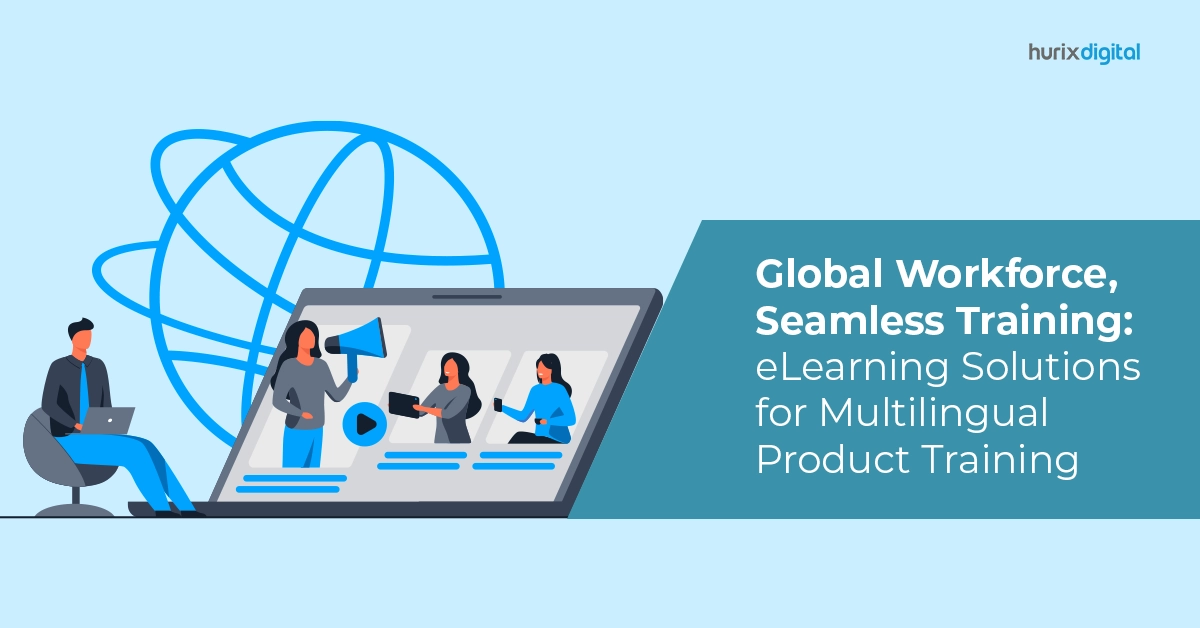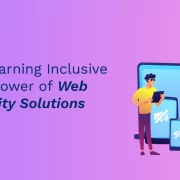
Global Workforce, Seamless Training: eLearning Solutions for Multilingual Product Training
Summary
This article explores the advantages of multilingual product training for employees, highlighting how it enables businesses to engage with global audiences effectively. It outlines the benefits of educating staff in various languages and offers guidance on adopting multilingual eLearning solutions.
If you’re a business that aims to go global but temporizes training your employees in multiple languages, this blog is for you. According to statistics, more than 50% of Google searches are conducted in languages other than English. This includes several international and regional ones, such as Mandarin, Spanish, and Hindi.
But why should this revelation concern you?
Well, this data clearly indicates what most corporate giants already seem to know — English is merely a means to establish your online presence. To proactively reach out to your audience, you must be as diverse as them.
If your business is omni-language in nature, you will find it much easier — not only to attract new customers but also to interact with them at every stage of the buyer journey. And well, one of the best ways you can ensure that is by imparting multilingual product training to your employees.
So, read on as we unfold the ABCs of language localization for product training and reveal how you can utilize eLearning solutions in this regard. Let’s start!
Table of Contents:
- What is Multilingual Product Training?
- What are the Advantages of Multilingual Product Training?
- How to Use eLearning Solutions for Multilingual Product Training?
- Wrapping Up
What is Multilingual Product Training?
Multilingual product training refers to the regime of training your employees in multiple languages about a specific product. It forms a core part of product training solutions in most business organizations, especially the ones that have a global presence or aspire to establish it.
Multilingual product training offers several benefits (we shall discuss them in depth in the next part). However, one of the top reasons why businesses should prioritize it is because it can help them reap the benefits of localization, allowing them to enter new markets and increase profitability.
Also Read: Inclusive Learning to Address the Diverse Needs in Workforce Development
What are the Advantages of Multilingual Product Training?
If you are wondering whether educating your employees in different languages about a product will help your business gain any tangible benefit or not, here is your answer:
1. Improved Accessibility
Businesses with employees who can communicate about a product in different languages enjoy the pros of increased accessibility.
They can reach out and impeccably serve customers with diverse linguistic backgrounds, subsequently capturing new markets and improving their overall market share.
2. Better User Experience
If customers are unable to interact with your business in their preferred language, they will most likely abandon it. In fact, stats show that 40% of buyers don’t even prefer purchasing from a website that’s not in their native language.
This is because it plays a huge role in deciding the user experience for them. So, when you train your employees in multiple languages, you are taking a big step toward improving the user experience for your customers.
3. Competitive Advantage
If your business has employees who can communicate with your customers in their local language, you have an unparalleled competitive advantage over your rivals.
This is because customers always like to buy from a business that can offer them insights about a product—clearly, in a language that they are fluent in—rather than a business that follows a monolingual approach. This is also why businesses that invest in language-specific eLearning for employees tend to see better results in terms of profitability than their competitors.
4. Reduced Support Requests
Another incredible benefit of cross-cultural training is a reduction in support requests.
When employees communicate about a product to customers in their own language, the chances of miscommunication are lowered. This smoothens the buyer’s journey, thus enhancing user experience. Moreover, even if a customer faces any confusion at a later point, they can easily reconnect with an employee to get a clear, understandable resolution.
5. Enhanced Brand Image
Businesses that impart multilingual product training to their employees can establish themselves as an inclusive organization in the industry.
This also creates a positive, consumer-focused image of the business in the minds of its audience. This enhanced brand reputation goes a long way toward creating a strong, global presence.
How to Use eLearning Solutions for Multilingual Product Training?
Now that you are aware of the advantages of multilingual product training for a business, here’s how you can use eLearning solutions and kickstart global workforce training to churn them:
1. Choose the Right eLearning Platform
First things first: Start by selecting the right multilingual eLearning platform for training. It should support multiple languages and include content localization features.
Moreover, you should check the availability of accessibility features like text-to-speech and subtitles in your virtual training solution to ensure maximum employee inclusivity.
2. Design Training Resources
Now, start by creating a blueprint of the training resources you wish to include in the curriculum of your multilingual training programs. This can encompass eBooks, digital textbooks, videos, audio content, quizzes, assessments, interactive simulations, live classes, and much more. Your aim should be to accommodate as many learning styles and preferences as possible.
3. Localize the Content
Once your curriculum is ready, it’s time to create the actual content for multilingual product training. Choose a digital publishing platform of your choice, integrate it with your multinational training solution, and start building the educational content. Make sure each of them is created in different languages and localized to the core so as to ensure maximum training efficiency.
4. Incorporate Multimedia Elements
If your online learning resources are boring, employee learning engagement will begin to fall after a point. To avoid that, try incorporating interactive multimedia elements like images, animations, graphics, videos, audio, etc., into the content.
5. Evaluate and Adapt
Lastly, keep evaluating the progress of your multilingual product training program. Leverage the analytics provided by the eLearning platform to see what area of the training needs improvement and brainstorm ideas to work on them.
Also Read: Addressing the Skills Gap: How Workforce Development Programs are Bridging the Divide
Wrapping Up
Creating a global workforce that’s proficient in catering to customers from different linguistic backgrounds is certainly a tedious task. But given the pros that are associated with it, we can say it’s worth all the hard work!
So, don’t wait! If you are a business that aspires to create a global presence, capitalize on multilingual product training for employees today.
If you’re looking for someone to kickstart your journey with, Hurix Digital is the ultimate solution. With our innovative workforce learning solutions, you can easily provide efficient multilingual product training to your employees and take your first steps to creating a global workforce.
So hurry up and get in touch today!

Performance, Results, Growth, and Life-Long Learning define my professional life. I am passionate about making workplace learning planful, purposeful, and impactful. I take pride in partnering with clients and bringing them the best in learning design and creating solutions that address business challenges.






